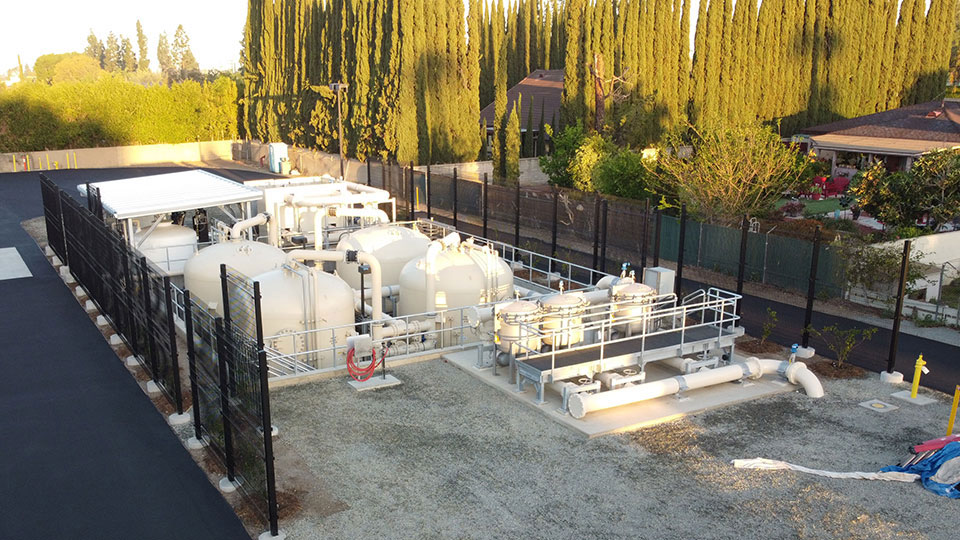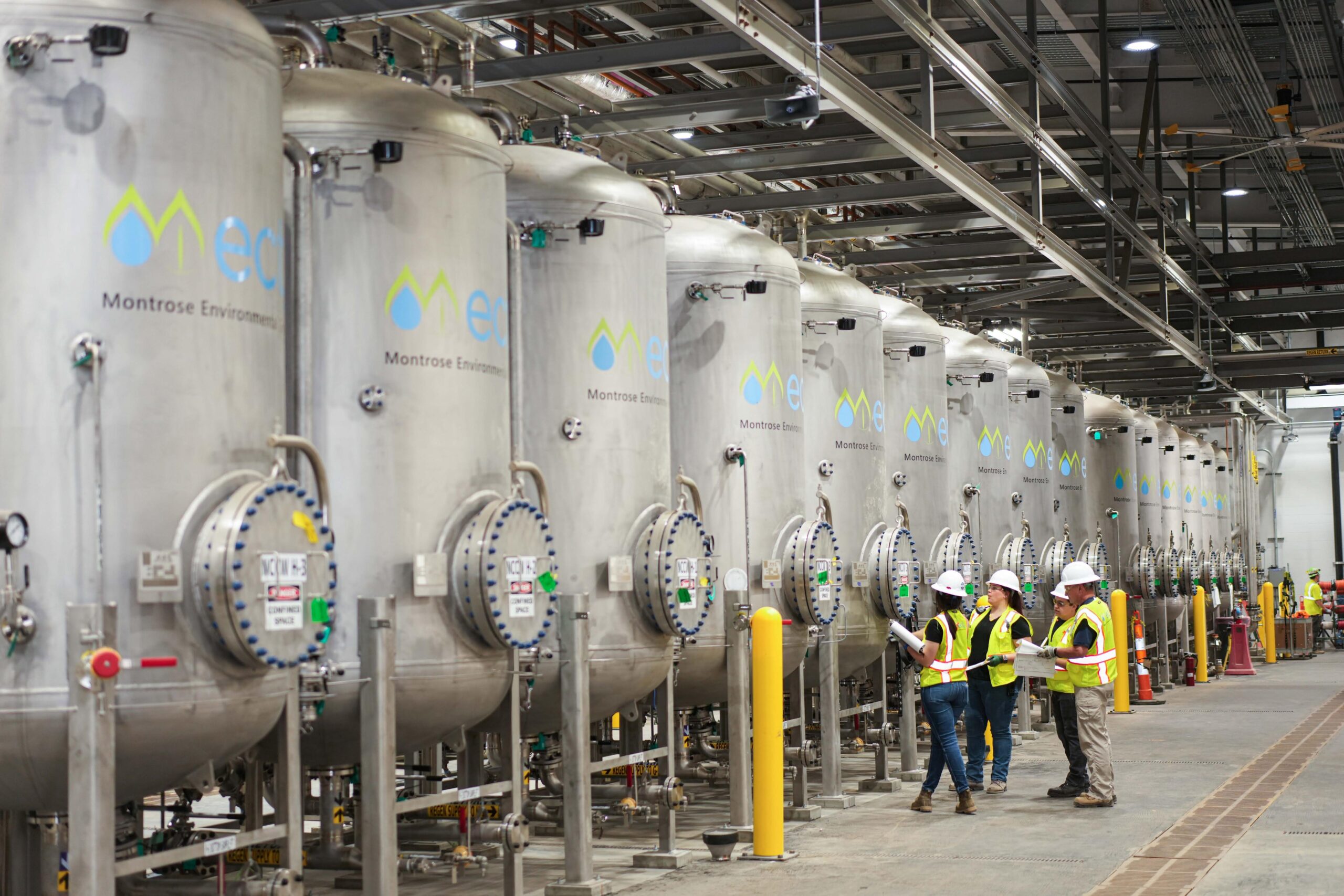Just How PFAS Treatment Makes Sure Clean and Lasting Water
The visibility of PFAS, generally recognized as "for life chemicals," postures significant challenges to water top quality and public wellness. The effects of these treatments extend beyond prompt wellness advantages; they elevate essential inquiries concerning long-lasting water management strategies that should be dealt with to guarantee a durable future.

Comprehending PFAS Contamination
PFAS, or per- and polyfluoroalkyl compounds, have arised as a considerable environmental worry as a result of their extensive occurrence and perseverance in the atmosphere. These artificial chemicals have actually been utilized in various industrial applications and consumer products, including non-stick kitchenware, water-proof apparel, and food product packaging, due to their distinct residential properties such as water and oil resistance.
The contamination of dirt and water resources by PFAS takes place largely via commercial discharges, firefighting foam use, and seeping from garbage dumps. pfas management. When released, these compounds are resistant to deterioration, causing their build-up in the atmosphere. This determination raises vital problems, as PFAS can travel long ranges via groundwater and surface area water systems, affecting drinking water products and ecosystems

Health And Wellness Risks of PFAS
The determination of PFAS in the environment elevates considerable health problems for individuals exposed to these materials. Research has actually linked PFAS direct exposure to different adverse wellness impacts, consisting of immune system dysfunction, liver damages, and enhanced threat of specific cancers cells.
The ubiquity of PFAS in customer products, such as non-stick cooking equipment, water-repellent materials, and food packaging, additional magnifies the risk of direct exposure. Drinking water polluted with PFAS is a significant worry, as these chemicals can leach into groundwater resources. Vulnerable populaces, consisting of children and those living near industrial websites, may deal with intense risks because of their developing systems and prospective for greater exposure levels.
As understanding of these wellness risks continues to expand, regulatory companies are starting to develop guidelines for PFAS levels in alcohol consumption water. Public wellness initiatives are vital to minimize exposure and safeguard areas from the long-term effects of these dangerous compounds.

Innovative Therapy Technologies
How can we properly deal with the obstacles presented by PFAS contamination in water resources? Ingenious therapy innovations are emerging as essential solutions in the pursuit for clean water. These approaches concentrate on the elimination or destruction of per- and polyfluoroalkyl substances (PFAS), which are notorious for their persistence in the setting.
One promising strategy is adsorption using sophisticated products, such as activated carbon straight from the source and ion exchange materials. These products have shown effectiveness in recording PFAS molecules from water. One more significant technology is membrane filtering, which makes use of nanofiltration and reverse osmosis to separate pollutants at the molecular degree, thus offering an obstacle versus PFAS.
In addition, progressed oxidation processes (AOPs) employ strong oxidants to damage down PFAS substances right into safe byproducts. This method is especially efficient for dealing with very infected water sources. Bioremediation techniques, employing particular bacteria, are likewise being discovered to weaken PFAS.
As study proceeds, crossbreed systems that incorporate multiple technologies may use enhanced efficiency, resolving the intricacies of PFAS contamination. The growth and implementation of these cutting-edge therapy innovations are vital steps towards ensuring the safety and security and sustainability of our water sources.
Benefits of Efficient PFAS Treatment
Efficiently dealing with PFAS contamination in water resources dramatically boosts public wellness and ecological security. PFAS, often referred to as "permanently click this chemicals," are immune to destruction and can build up in the body, causing serious wellness dangers such as cancer, liver damages, and body immune system dysfunction. By implementing reliable therapy techniques, neighborhoods can lower exposure to these damaging substances, eventually improving the health and wellness outcomes of their populations.
In addition, effective PFAS treatment adds to the preservation of regional communities. Infected water can adversely influence aquatic life and interrupt the fragile balance of neighborhood environments. By making sure clean water, therapy procedures safeguard biodiversity and preserve ecological stability.
In addition, effective PFAS remediation can cultivate public self-confidence in water quality. When neighborhoods are ensured that their drinking water is devoid of harmful contaminants, it promotes a feeling of safety and security and well-being. This depend on is crucial for community interaction and assistance for recurring water monitoring initiatives.
Future of Water Sustainability
Amidst expanding worries concerning water quality and scarcity, the future of water sustainability depends upon cutting-edge strategies and collaborative efforts. As communities face the looming dangers of impurities like PFAS, the growth of innovative treatment modern technologies is necessary. These modern technologies not just concentrate on the elimination of harmful substances however likewise promote the reuse and recycling of water, thus minimizing general demand.
Additionally, efficient water governance plays a vital function in making sure sustainable methods. Policymakers should integrate scientific research with regulatory structures to develop clear guidelines for water usage and treatment. Stakeholder involvement, consisting of regional neighborhoods useful source and industries, fosters a feeling of common obligation and encourages lasting practices throughout different industries.
Investment in framework is additionally important; upgrading aging systems to incorporate modern-day filtering and purification approaches can significantly boost water high quality. Additionally, welcoming environment-friendly innovations, such as natural purification systems, can supply environment-friendly services.
Eventually, the future of water sustainability depends on an all natural approach that combines innovation, plan, and neighborhood involvement. By prioritizing these elements, we can secure our water resources for generations ahead, guaranteeing tidy and sustainable water for all.
Verdict
In final thought, the efficient treatment of PFAS is crucial for making sure tidy and lasting water. Ultimately, robust PFAS treatment methods contribute to long-lasting durability in water administration, promoting public depend on in water high quality and promoting sustainable practices.
Comments on “PFAS Treatment in Surface Water”